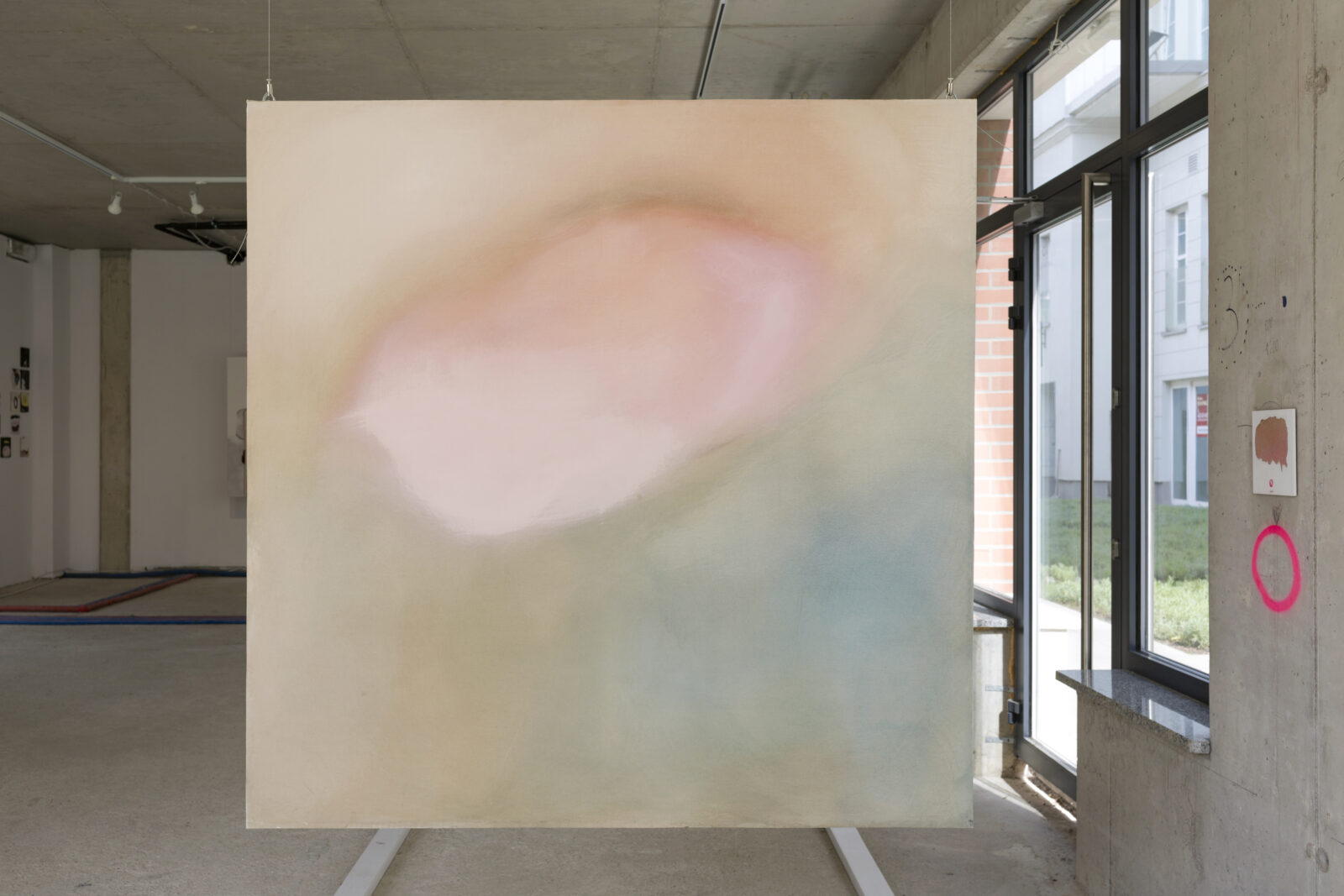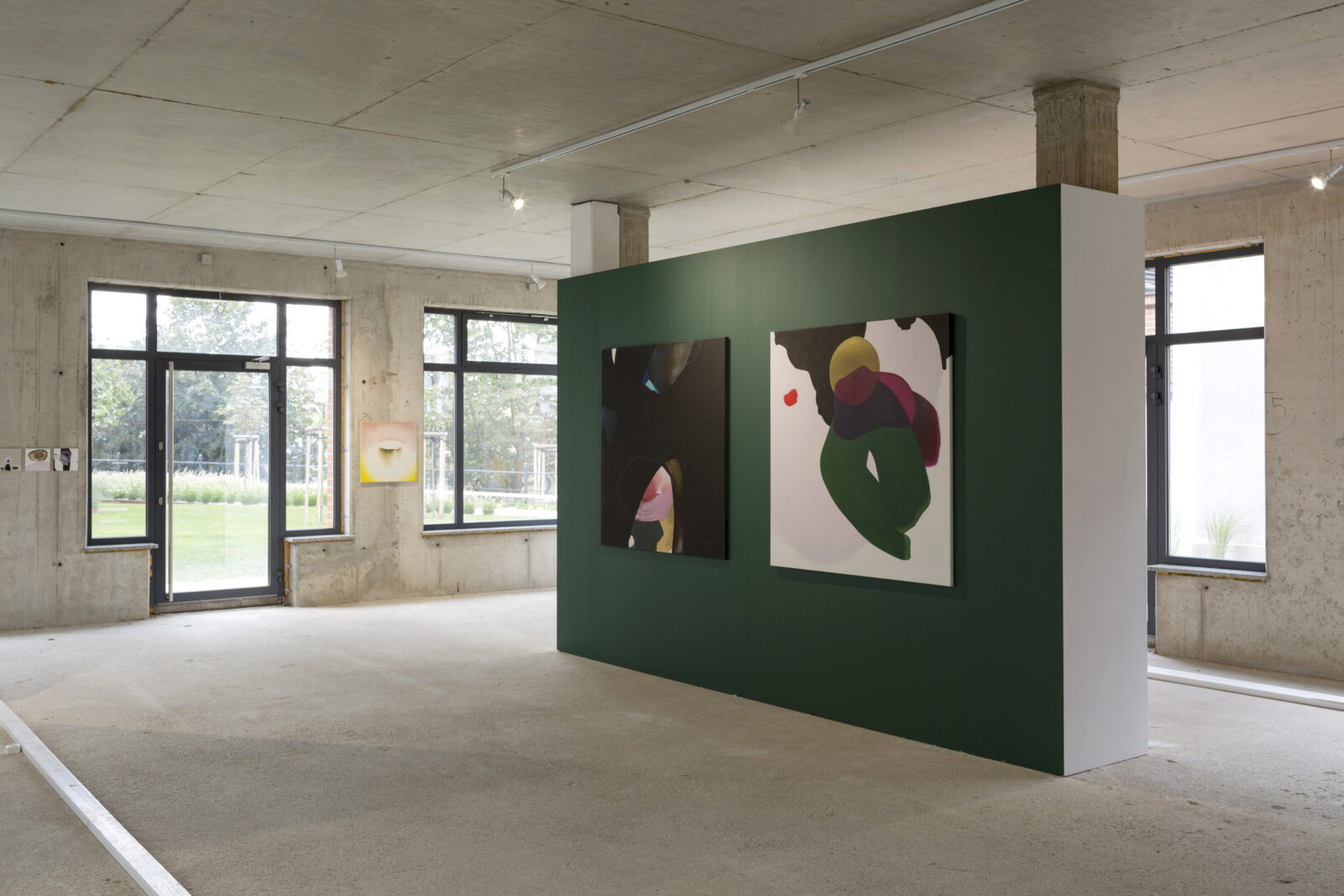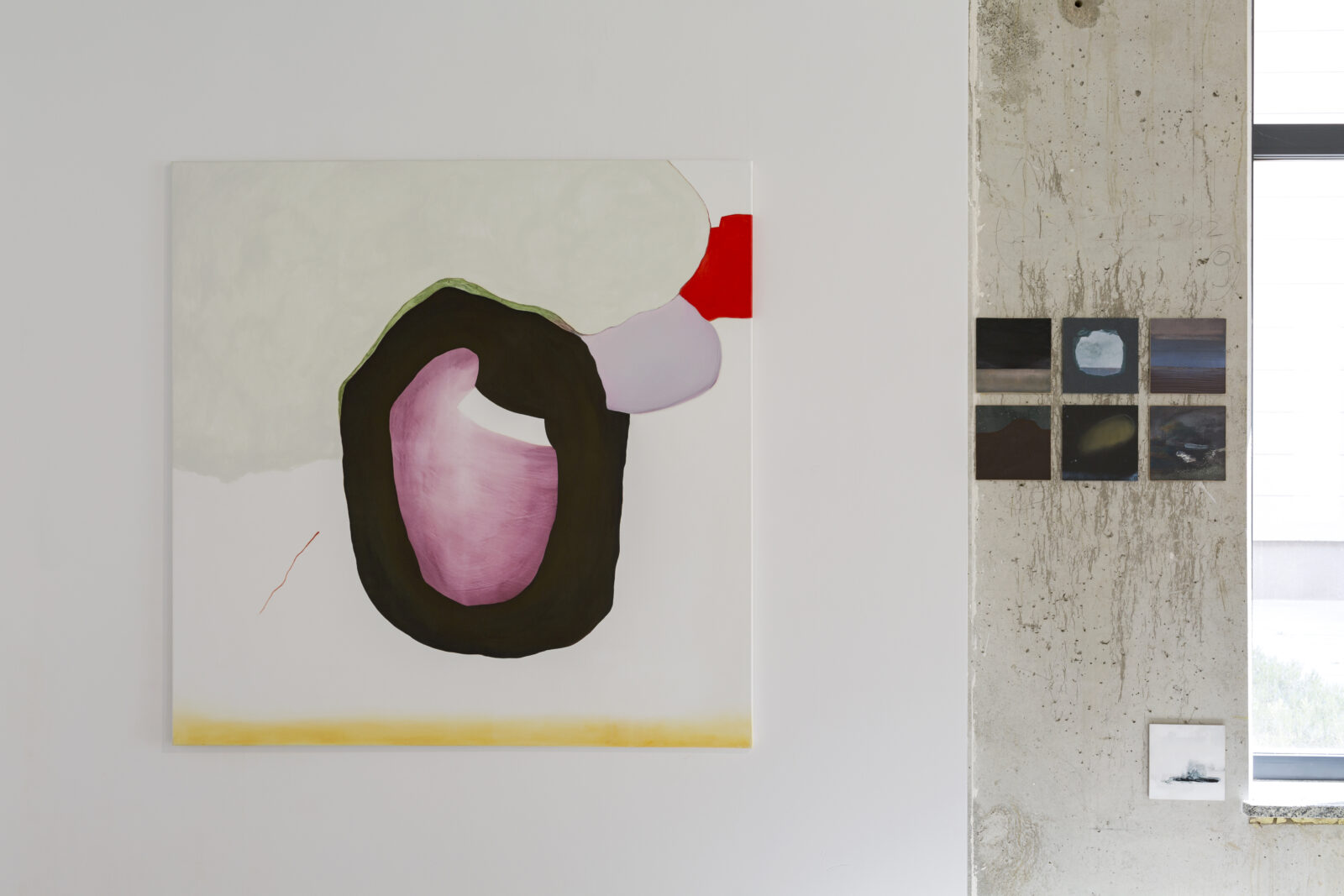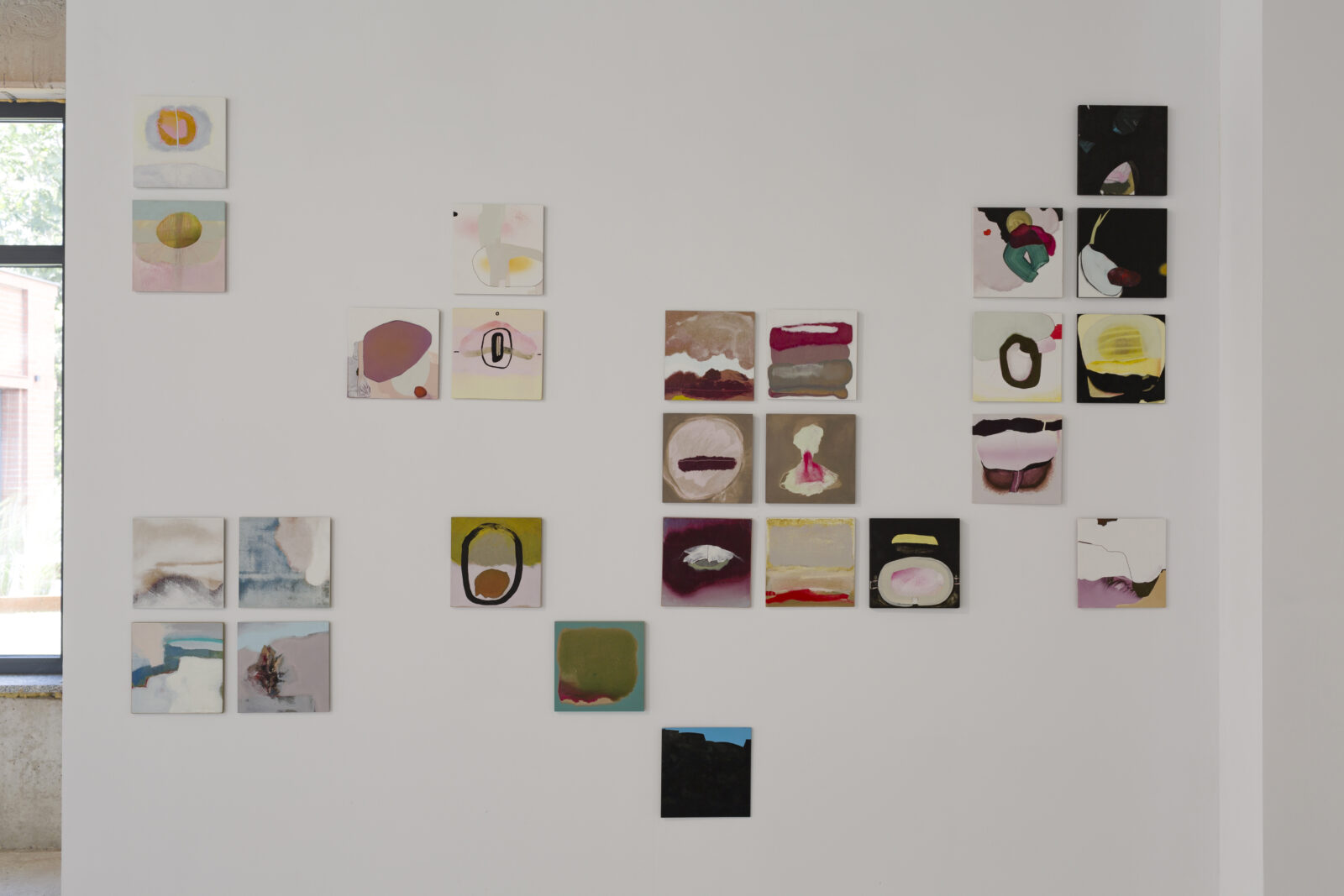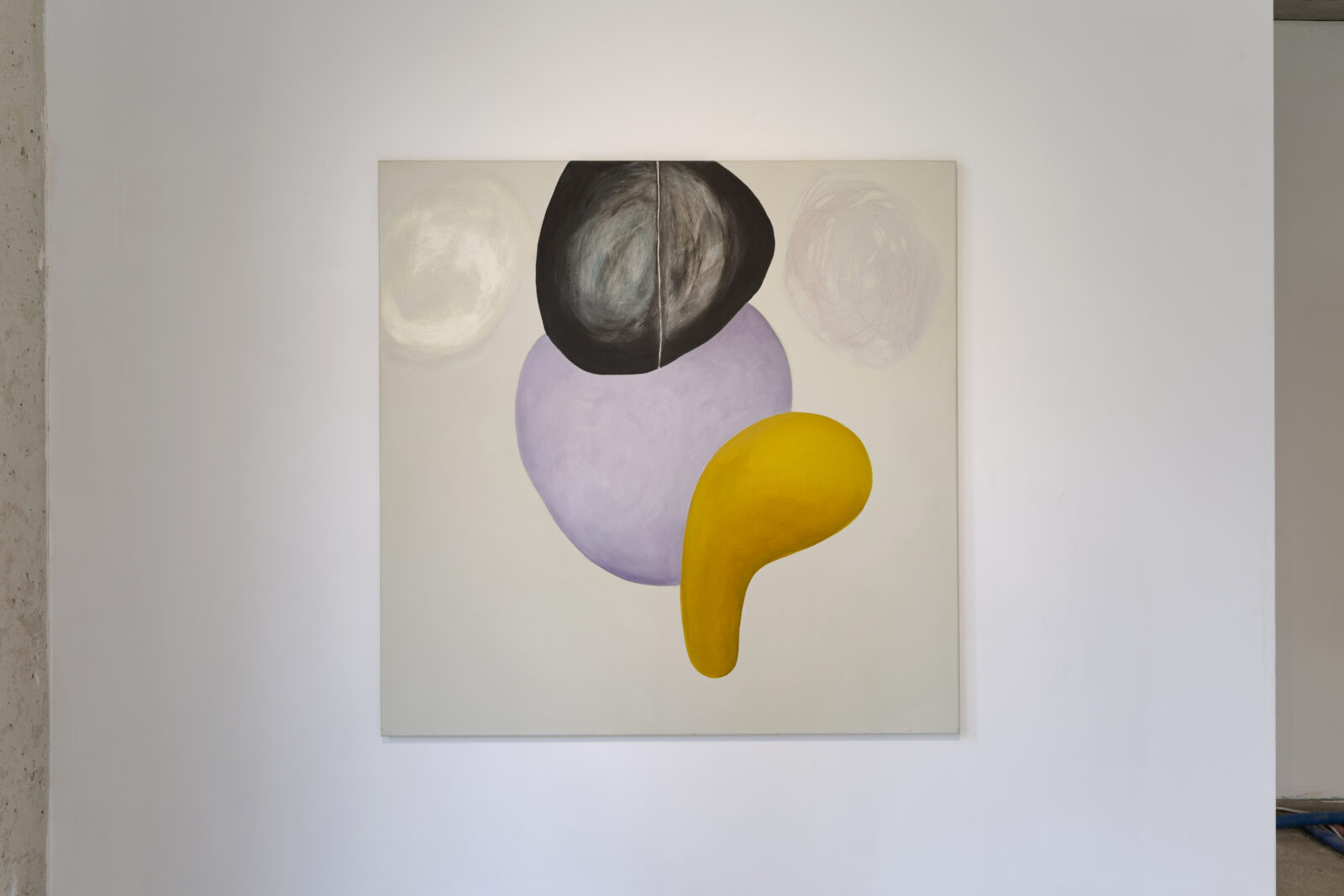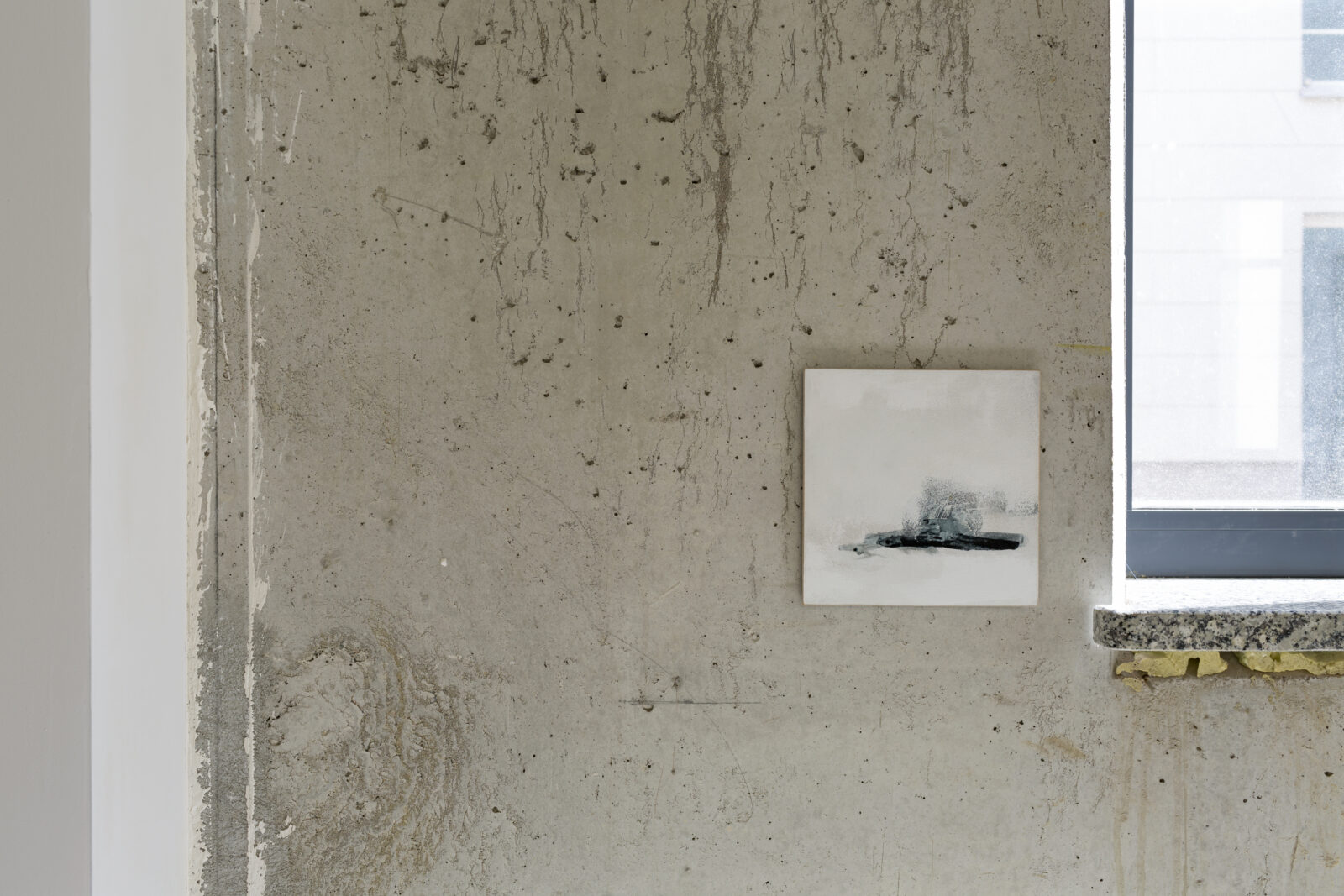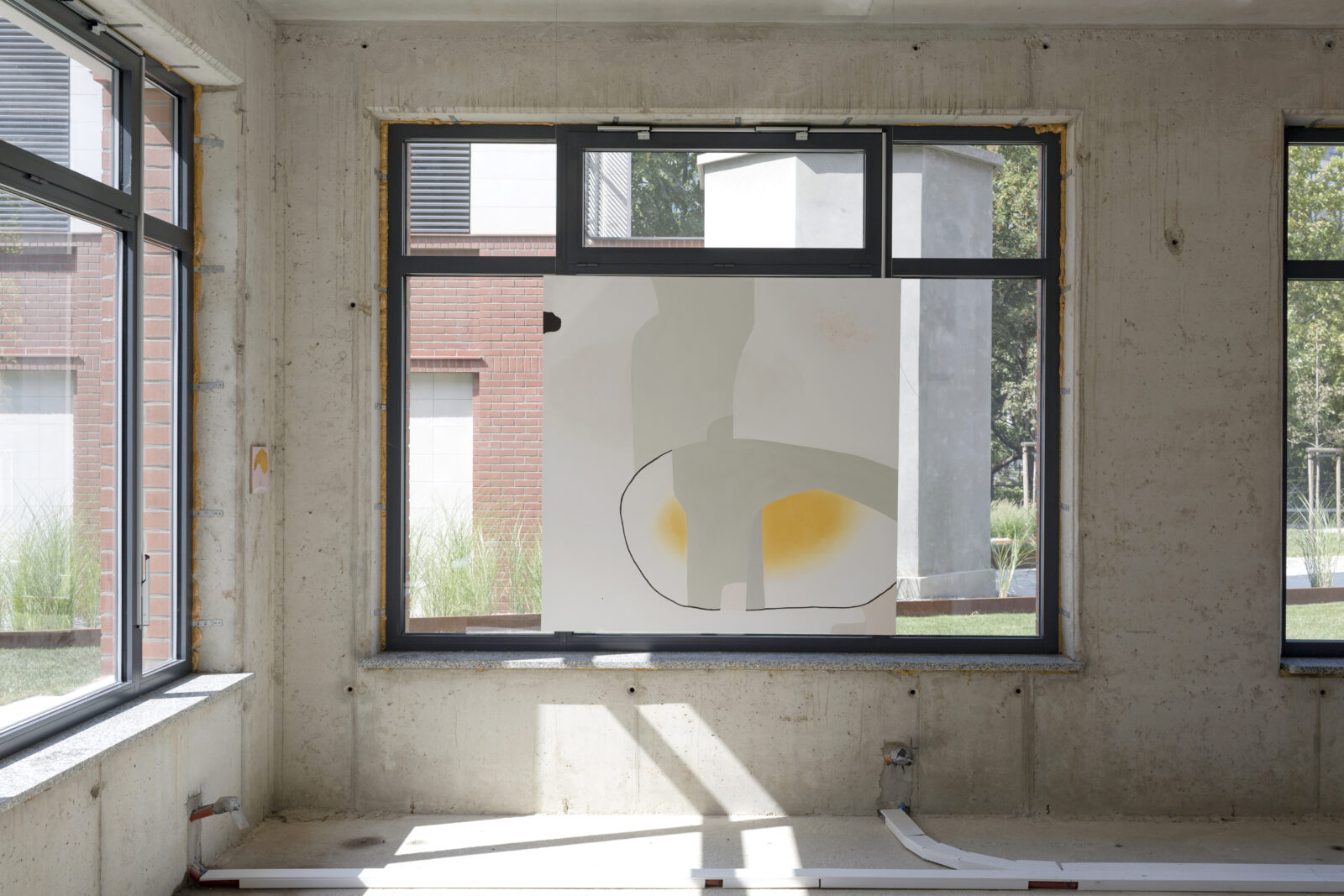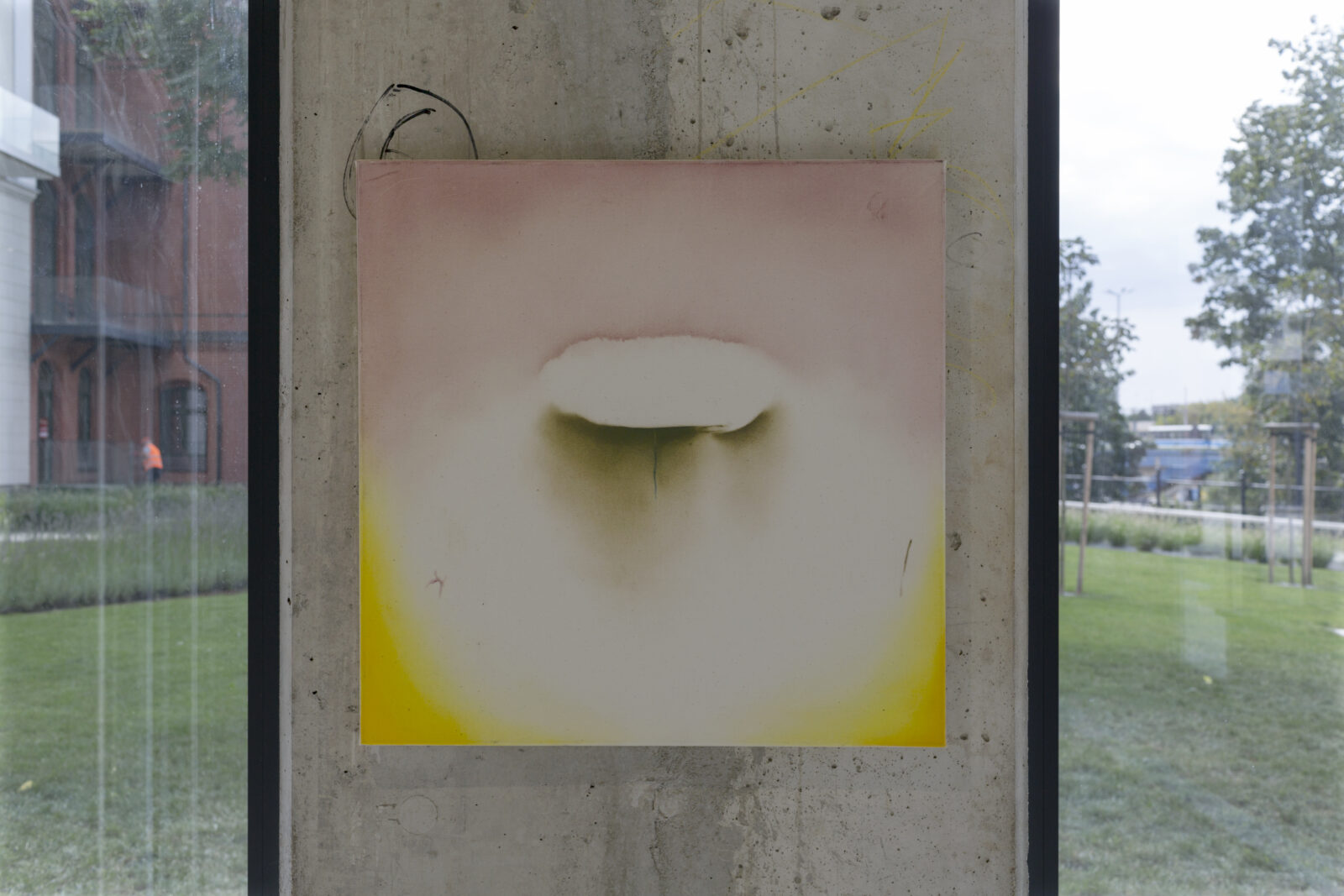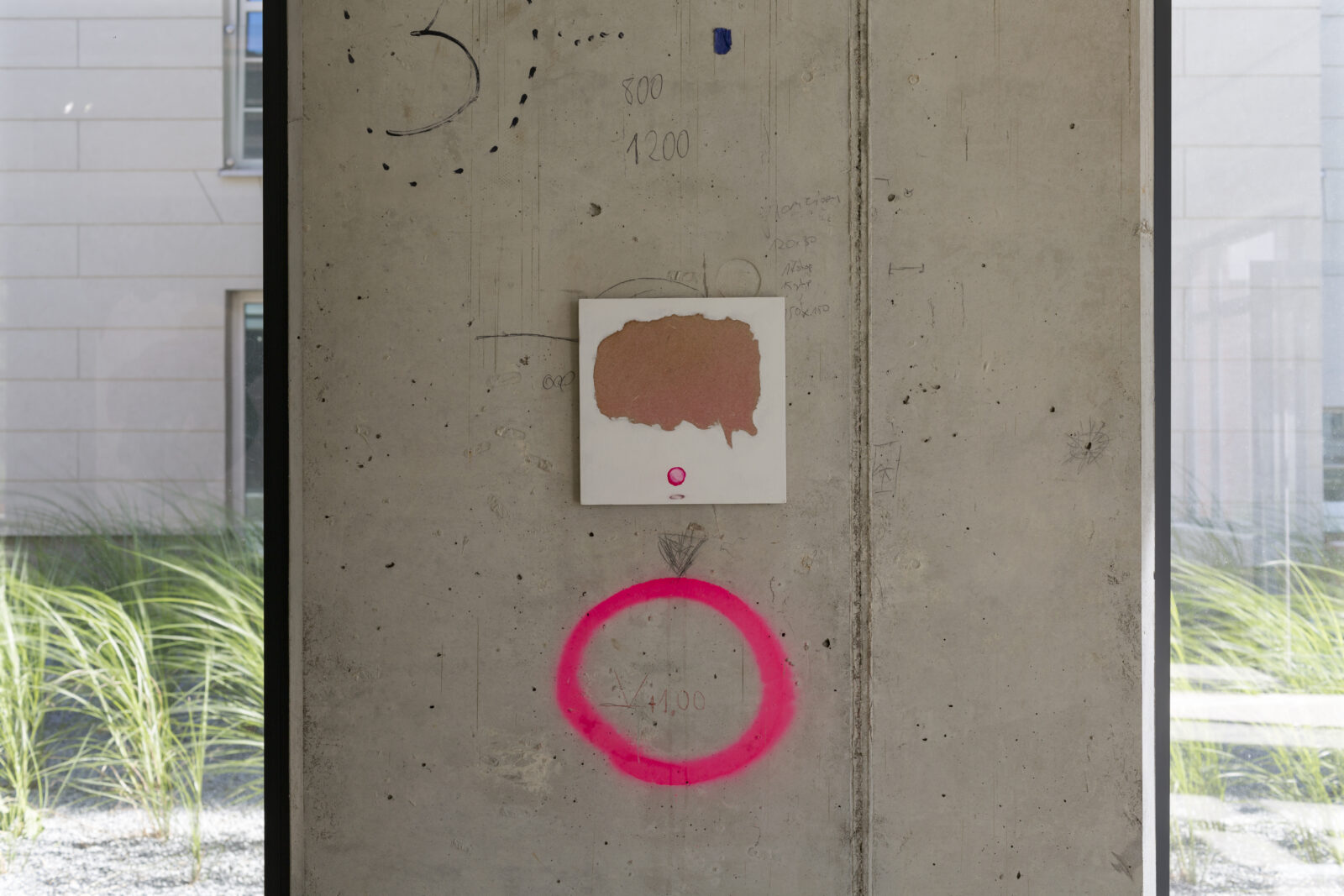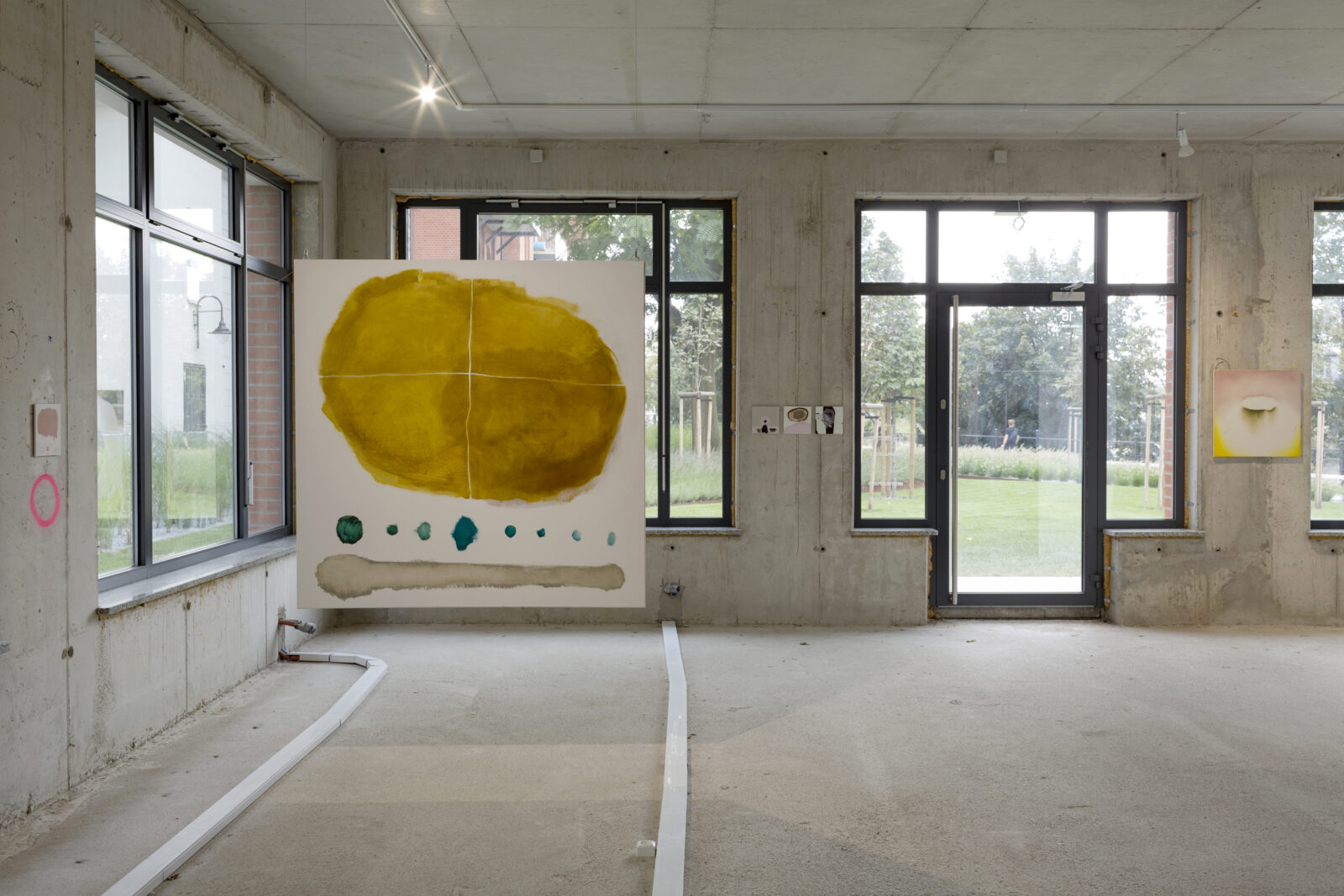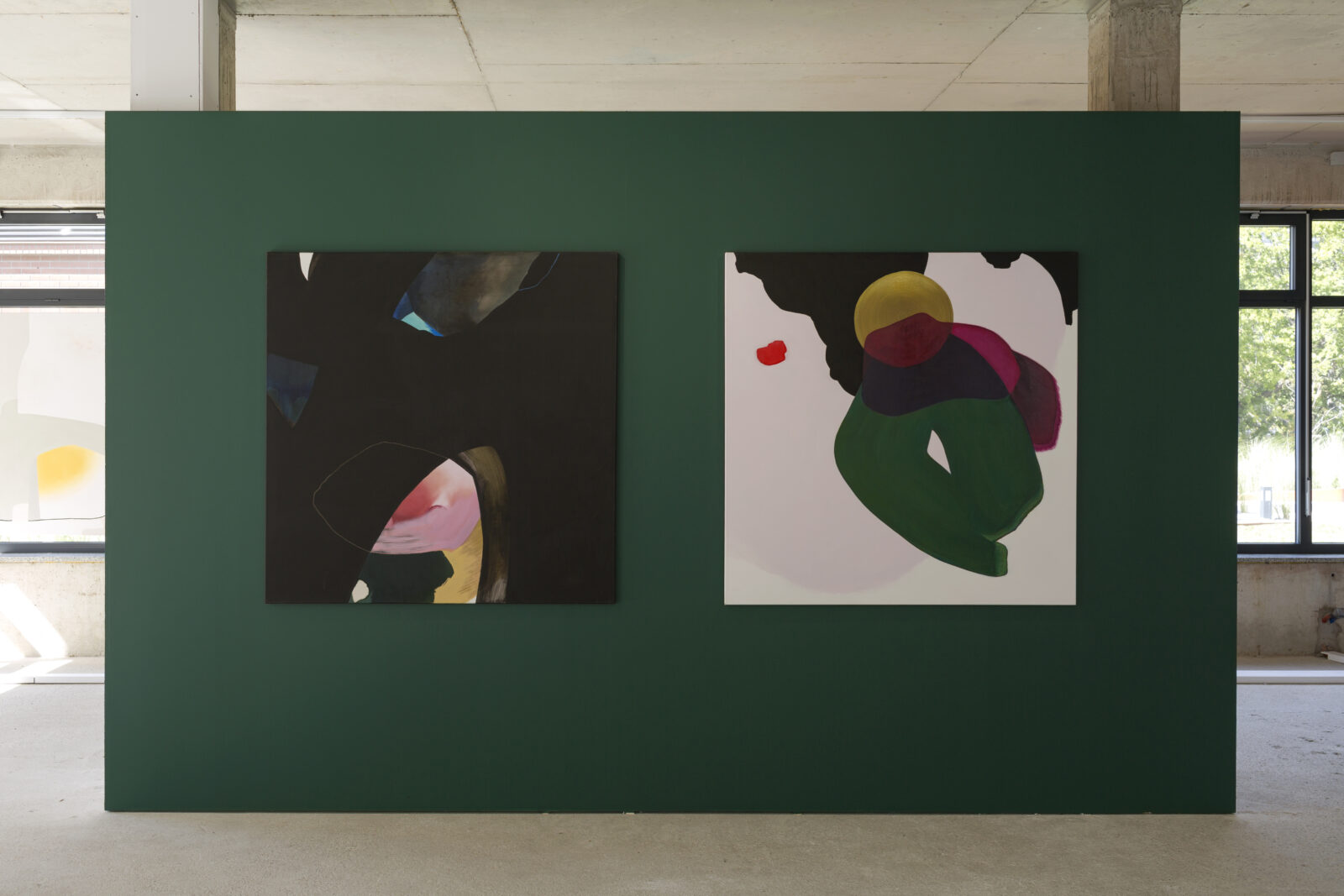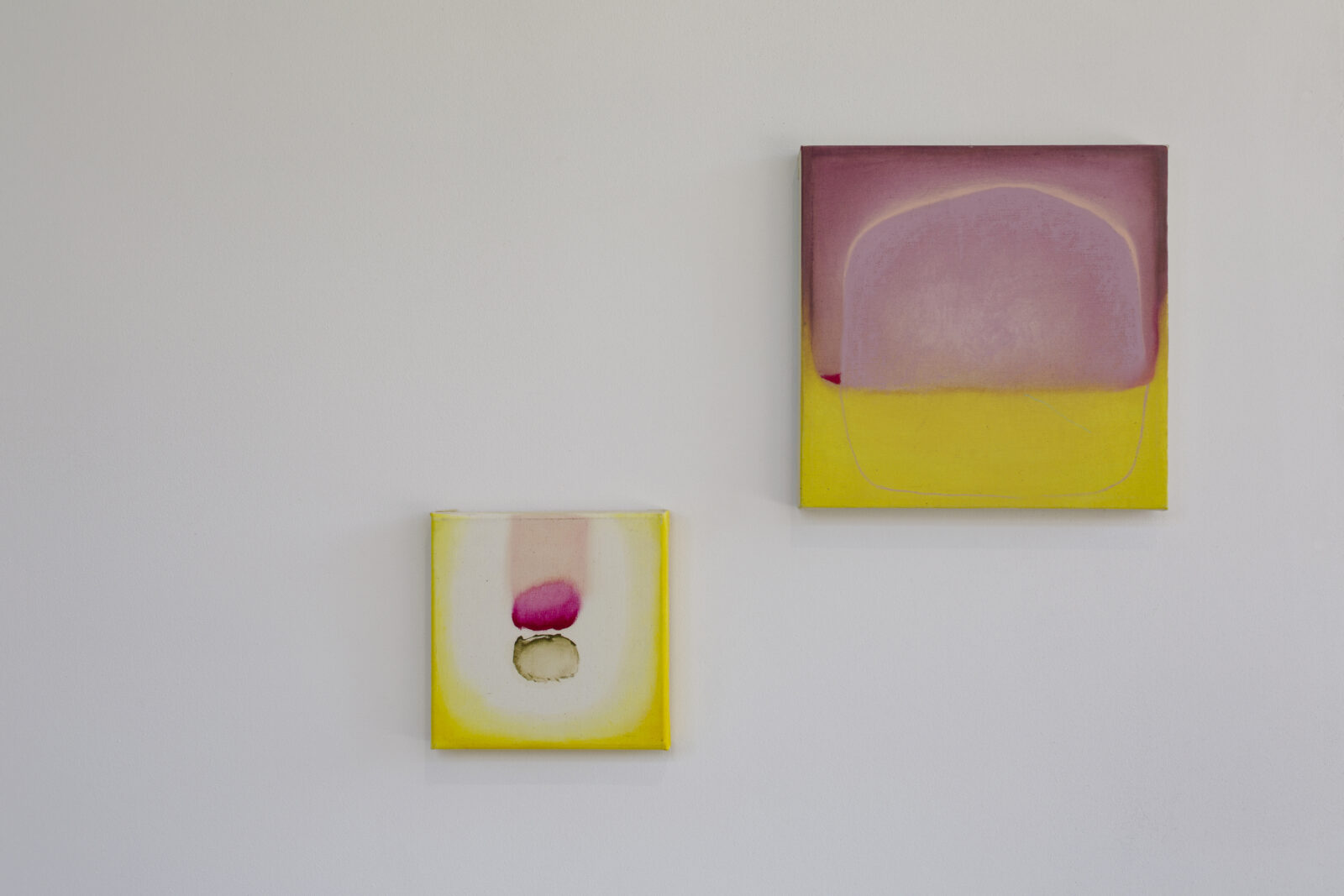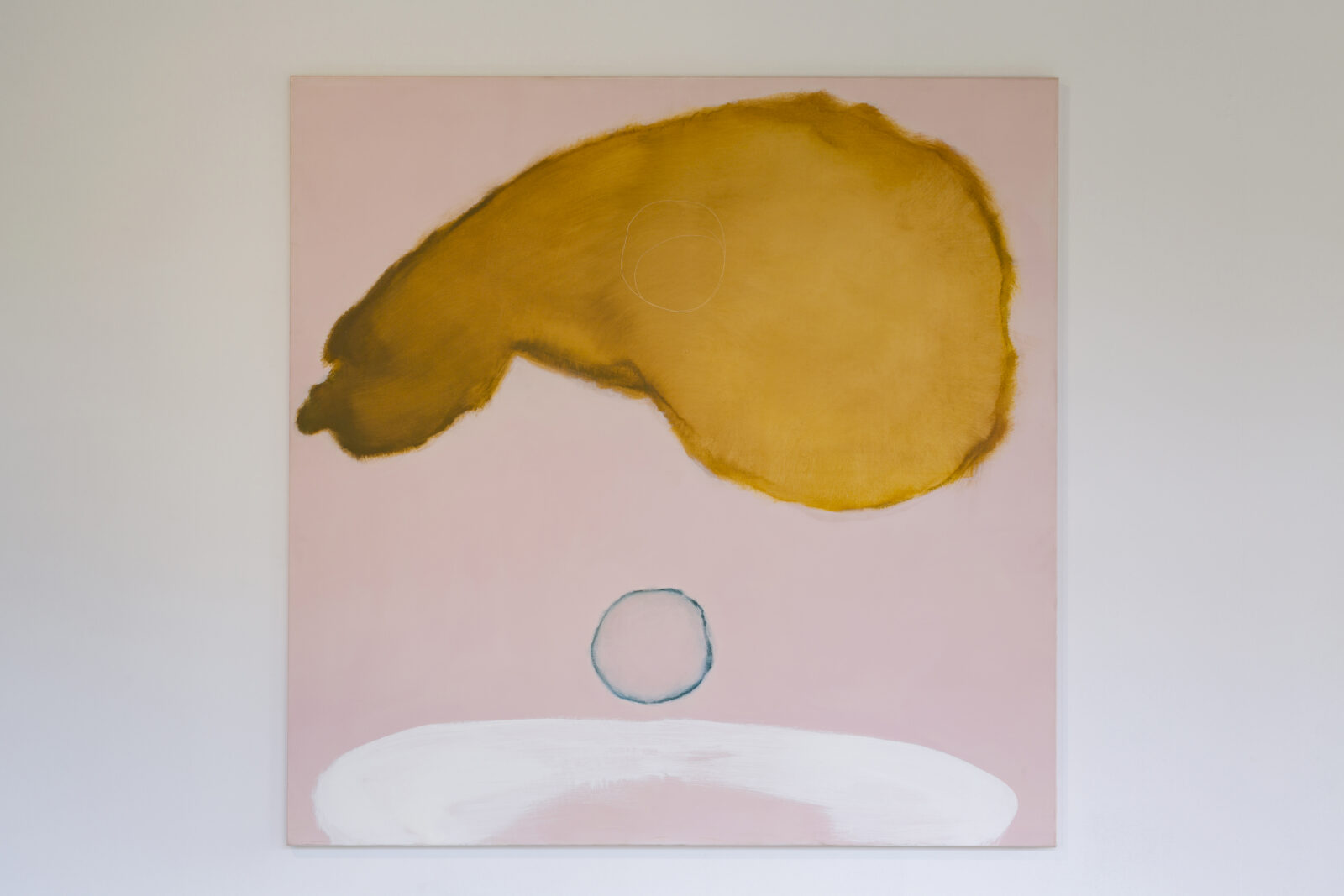At the beginning of the 20th century, Wassily Kandinsky predicted that the art of “tomorrow” would enable us “to grasp the inner appeal of a truly emancipated
colour and form composition,” free from borrowings from the outside world. “A spiritual turn is speeding us on almost violently, now opening the doors to the dissolution of matter,” he wrote in the 1911 treatise On the Spiritual in Art, “it can be said that only a few ‘hours’ separate us from this absolute composition.”
For Kandinski, the creative act was associated with the “principle of innermost necessity” – a work of art is supposed to be an expression of the mystical powers that lie dormant in the artist. He viewed art as an important tool of spiritual practice, indispensable on the path of human development, necessary to “keep the soul at a certain height.”
Justyna Maksajda’s painting does not refer to the outside world; it neither recreates nor comments on the reality around us. Rather, it describes an internal state.
By means of painting, the artist captures a moment of stillness – a state of special concentration in which thought and the fleeting moment materialise thanks to colour and form. The practice of painting thus becomes tantamount to a spiritual practice. And like any other practice, it is inseparably connected with everyday life – it needs attention and focus, regularity and repetition. It is in everyday activities, seemingly trivial and irrelevant, that the artist finds a moment of contemplation. The aforementioned stillness, from which new paintings emerge, evokes associations with the practice of meditation – the art of focusing attention on the here and now. In this sense, Maksajda approaches painting as a spiritual and highly intellectual activity, a combination of intuitive actions and rational procedures – training for the soul and mind.
Kandinsky argued that the spiritual element of art is captured in the subtle relationships between form and colour. These subtleties, resulting from an artistic instinct, can be experienced at various levels in Justyna Maksajda’s painting. First of all, at the formal level, visual and purely aesthetic; but also beyond material categories and physical terms.
When given proper attention, a work of art can allow our mind to go beyond common concepts and develop (as Kandinsky would like) “the ability to see spiritual content in both material and abstract things, because it (…) enriches our lives and is absolutely necessary for our future .”
***
The Krupa Gallery Summer Stage is a series of exhibitions and accompanying cultural events that are organised in cooperation with the Makima Group.
Between June and August 2020, the Krupa Gallery will present three exhibitions of Polish female artists – painters who create abstract works, but adopt very different starting points in their practice.
The exhibitions will be held in the glass pavilion on the revitalised Old Town Boulevard in Wrocław, which will soon become a unique place regularly hosting international art projects.
The Summer Stage emerged out of the desire and need to look for solutions that would promote and popularise contemporary art and actively support artists’ work and development.
The purpose of the initiative is also to promote cooperation between the private sector and the field of culture and art. Some of the featured works will be (or have already been) purchased for the Krupa Gallery collection.
Programme:
26.06‒13.07.2020 | Iza Opiełka
17.07‒18.08.2020 | Magdalena Sadłowska
20.08‒7.09.2020 | Justyna Maksajda



